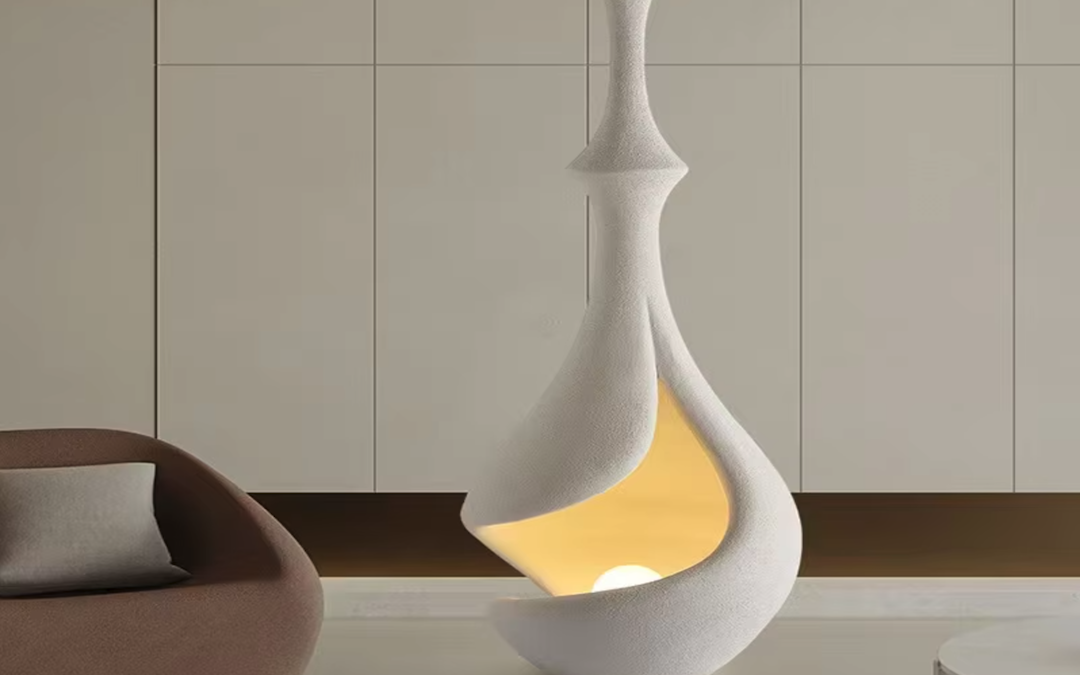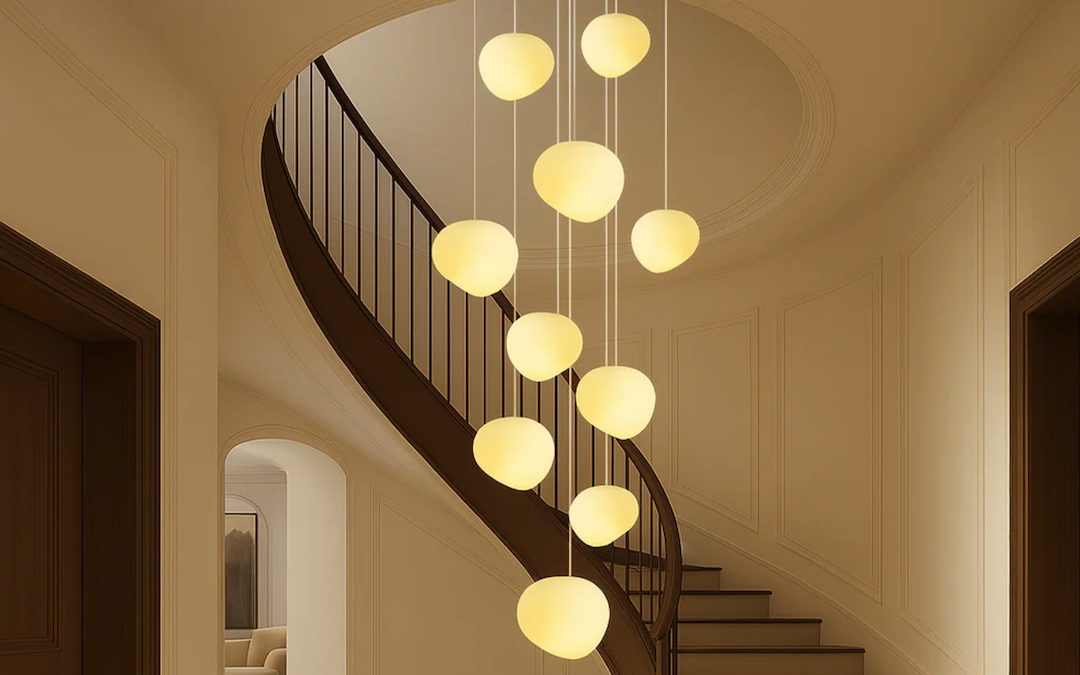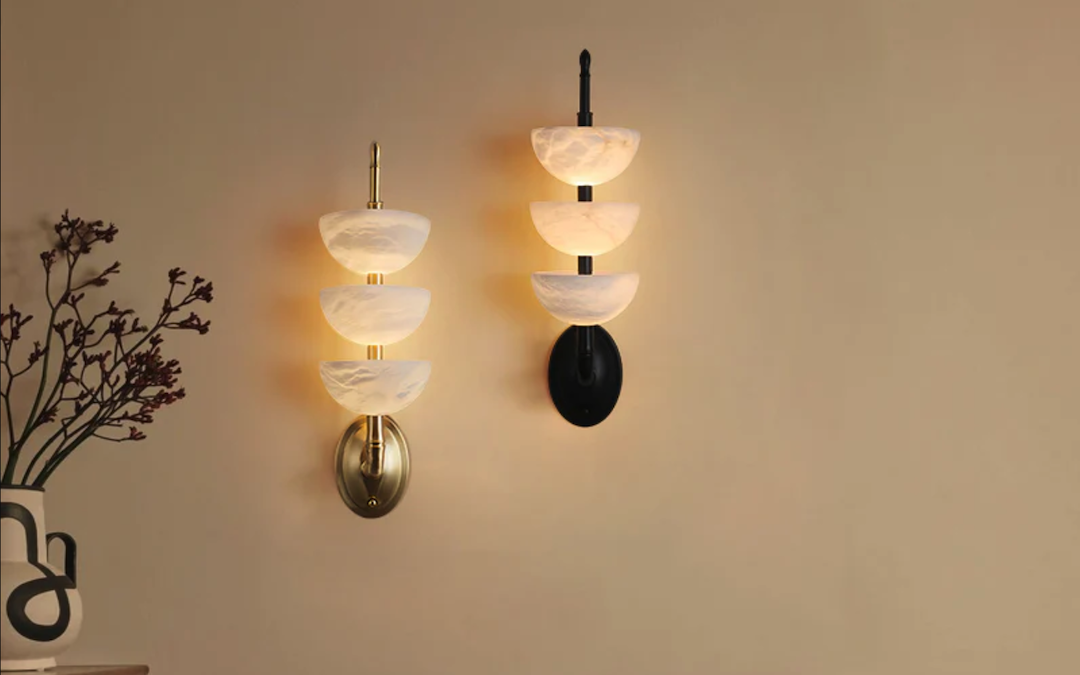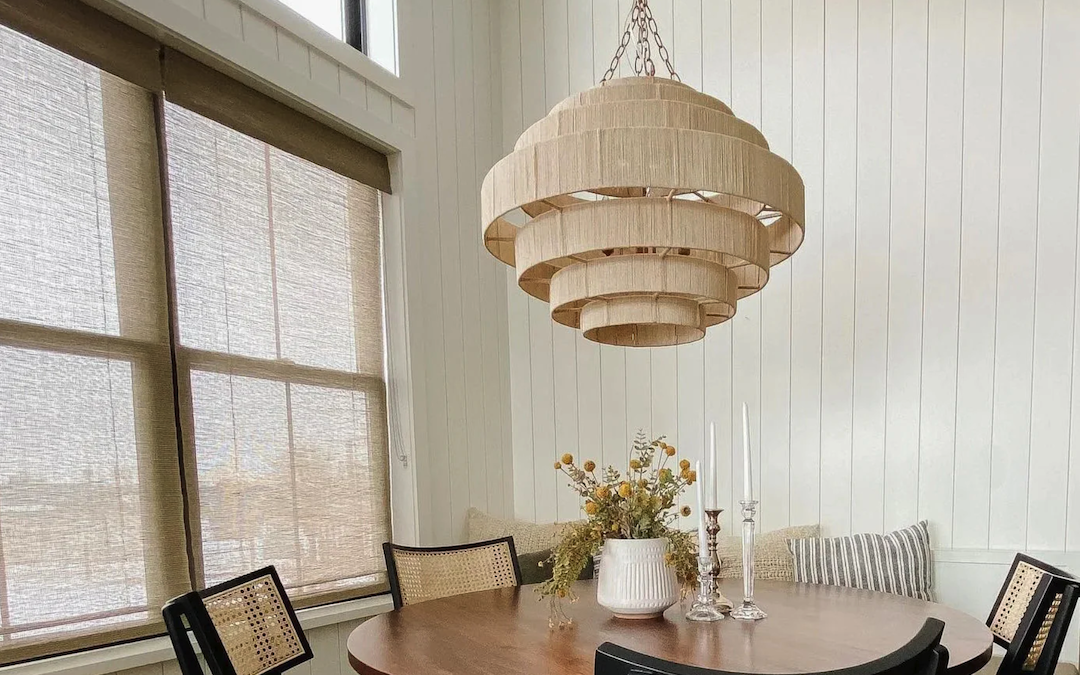
Embracing Imperfection: Retro Wabi-Sabi Floor Lamp
Wabi-sabi is a Japanese aesthetic that celebrates the beauty found in imperfection, transience, and the natural world. Rooted in Zen Buddhism, this philosophy encourages an appreciation for the fleeting nature of life and the unique characteristics that come with age and wear. The term “wabi” refers to a rustic simplicity, while “sabi” denotes the beauty that comes with the passage of time.
Together, they create a harmonious balance that invites individuals to find beauty in the mundane and the imperfect. This perspective shifts the focus from striving for perfection to embracing the unique narratives that objects and spaces carry. In a world increasingly dominated by mass production and uniformity, wabi-sabi offers a refreshing counterpoint.
It invites us to slow down and appreciate the subtleties of our surroundings. For instance, a cracked ceramic bowl may tell a story of its journey, evoking memories of meals shared or hands that crafted it. This appreciation for the imperfect can extend beyond objects to encompass experiences and relationships, fostering a deeper connection to the world around us.
By recognizing the beauty in flaws, we cultivate a sense of gratitude and mindfulness that enriches our lives.
Embracing Imperfection in Design
In design, wabi-sabi encourages a departure from conventional aesthetics that prioritize sleek lines and flawless finishes. Instead, it champions organic forms, asymmetry, and materials that reveal their natural state. This approach can be seen in various design disciplines, from architecture to interior design, where the emphasis is placed on authenticity rather than perfection.
For example, a handcrafted wooden table with visible knots and grain variations becomes a focal point in a room, inviting conversation and admiration for its unique character. The embrace of imperfection also extends to color palettes in wabi-sabi design. Earthy tones, muted hues, and weathered textures create an inviting atmosphere that feels both grounded and serene.
Designers often incorporate reclaimed materials, allowing the history of each piece to shine through. A wall adorned with aged plaster or a floor made from salvaged wood not only adds visual interest but also tells a story of sustainability and respect for craftsmanship. This approach fosters an environment where imperfections are celebrated rather than hidden, creating spaces that feel lived-in and authentic.
The Retro Aesthetic of Wabi-Sabi Floor Lamps
Wabi-sabi floor lamps Lightingstudioberkeley embody the principles of this aesthetic by combining functionality with an appreciation for the imperfect. These lamps often feature organic shapes, asymmetrical designs, and materials that showcase their natural beauty. For instance, a lamp made from driftwood may retain its rough texture and irregular form, serving as both a light source and a sculptural element in a room.
The interplay of light and shadow created by such designs enhances the ambiance, inviting warmth and tranquility into the space. The retro aesthetic of wabi-sabi floor lamps often draws inspiration from mid-century modern design, which celebrated simplicity and functionality. Vintage lamps with patinaed finishes or mismatched shades can evoke nostalgia while embodying the wabi-sabi philosophy.
These pieces not only illuminate a room but also serve as conversation starters, each carrying its own history and charm. By incorporating such lamps into home decor, individuals can create an atmosphere that reflects their personality while embracing the beauty of imperfection.
Finding Serenity in the Wabi-Sabi Philosophy
The wabi-sabi philosophy extends beyond aesthetics; it offers a pathway to serenity in our fast-paced lives. By embracing imperfection and transience, we learn to let go of unrealistic expectations and cultivate acceptance. This mindset encourages mindfulness, allowing us to appreciate each moment as it comes without the burden of comparison or judgment.
In practice, this might mean taking time to enjoy a simple cup of tea in a handmade ceramic mug, savoring the warmth and texture rather than rushing through the experience. Incorporating wabi-sabi into daily life can also foster resilience in the face of challenges. When we recognize that imperfections are inherent to existence, we become more adaptable and open to change.
This perspective can be particularly beneficial during difficult times, as it encourages us to find beauty in struggle and growth. By viewing setbacks as opportunities for learning rather than failures, we cultivate a sense of peace that allows us to navigate life’s uncertainties with grace.
The Timeless Appeal of Wabi-Sabi Decor
Wabi-sabi decor possesses a timeless quality that transcends trends and fads. Its emphasis on authenticity and natural materials resonates with individuals seeking to create spaces that reflect their values and experiences. Unlike styles that may quickly become outdated, wabi-sabi decor evolves with its surroundings, adapting to changes while retaining its core principles.
This adaptability makes it an enduring choice for those who appreciate the beauty of simplicity and the stories embedded in their surroundings. The allure of wabi-sabi decor lies in its ability to evoke emotions and memories. Each piece tells a story—whether it’s a handwoven textile passed down through generations or a piece of pottery crafted by local artisans.
These elements create a sense of connection to both the past and present, fostering an environment where individuals feel grounded and at home. By curating spaces filled with meaningful objects, one can cultivate an atmosphere that encourages reflection and appreciation for life’s journey.
Incorporating Wabi-Sabi Elements into Your Home
Integrating wabi-sabi elements into your home involves a thoughtful approach to design that prioritizes authenticity over perfection. Start by selecting natural materials such as wood, stone, or clay that showcase their inherent textures and imperfections. For instance, consider incorporating reclaimed wood furniture that retains its original character or handmade ceramics with irregular shapes.
These choices not only enhance the aesthetic appeal but also contribute to a more sustainable lifestyle by reducing reliance on mass-produced items. Color plays a crucial role in creating a wabi-sabi atmosphere as well. Opt for muted tones inspired by nature—soft greens, earthy browns, and gentle grays can evoke a sense of calmness and connection to the environment.
Layering different textures through textiles such as linen or wool can add depth to your space while maintaining an organic feel. Additionally, incorporating plants into your decor can bring life into your home while reinforcing the idea of growth and impermanence inherent in wabi-sabi philosophy.
The Handcrafted Charm of Wabi-Sabi Floor Lamps
Handcrafted wabi-sabi floor lamps exemplify the beauty of artisanal craftsmanship while embodying the principles of this aesthetic. Each lamp is often unique, reflecting the individual touch of its creator through variations in shape, texture, and finish. For example, a lamp made from hand-turned wood may showcase natural imperfections like knots or grain patterns that tell a story of its origin.
This handcrafted charm adds character to any space while promoting an appreciation for skilled artisanship. Moreover, these lamps often utilize materials that age gracefully over time—such as metal with patina or glass with subtle imperfections—enhancing their visual appeal as they evolve. The interplay between light and shadow created by these designs can transform a room’s ambiance, casting warm glows that invite relaxation and contemplation.
By choosing handcrafted wabi-sabi floor lamps for your home, you not only support local artisans but also bring an element of authenticity into your living space.
Embracing Imperfection: Making Wabi-Sabi a Part of Your Lifestyle
Embracing imperfection as part of your lifestyle involves cultivating a mindset that values authenticity over societal standards of perfectionism. This shift can manifest in various aspects of life—from how you approach personal relationships to how you engage with your environment. For instance, rather than striving for flawless social interactions or meticulously curated spaces, focus on genuine connections and experiences that reflect your true self.
Incorporating wabi-sabi into daily routines can also enhance mindfulness practices. Take time to appreciate small moments—whether it’s enjoying the texture of a well-worn book or savoring the aroma of freshly brewed coffee—allowing yourself to be present without distraction. By fostering an appreciation for life’s imperfections, you create space for growth and resilience while nurturing a deeper connection to yourself and those around you.
Ultimately, making wabi-sabi a part of your lifestyle invites serenity into your life while celebrating the beauty inherent in every moment.



